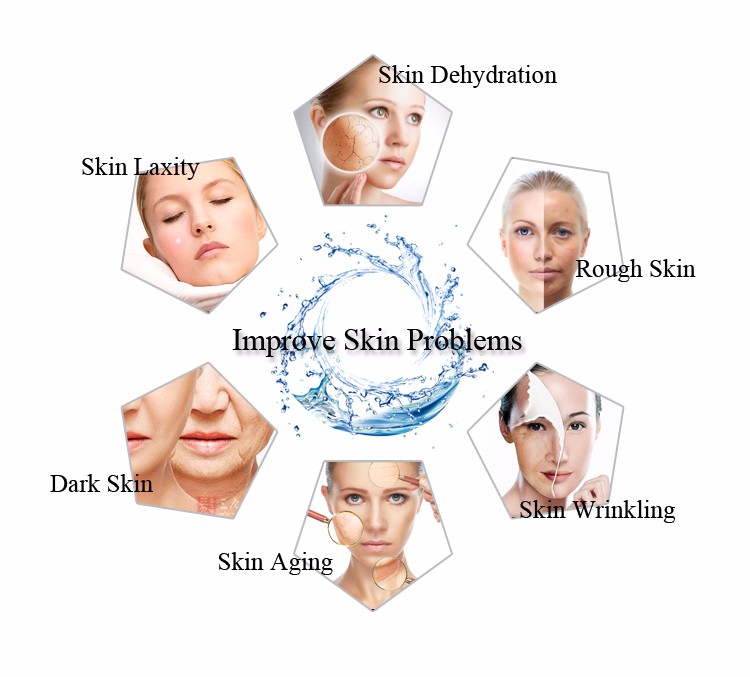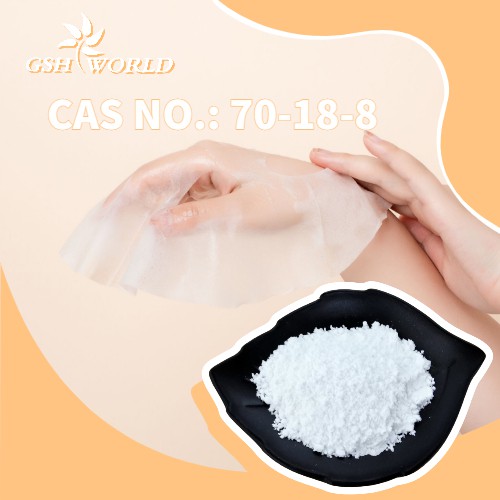Through its multiple mechanisms of antioxidation, regulation of melanin synthesis and whitening, glutathione has become an effective means of treating chloasma.
Definition
melasma, commonly known as “butterfly spots”, is a kind of symmetrical and irregular pigmented spot that is frequently found on the face.
The rash develops slowly and can last for many years. It is common among young and middle-aged women. Factors such as sun exposure, pregnancy, and oral contraceptives can aggravate the symptoms.
Its pathogenesis has not been fully clarified. It is difficult to treat and prone to recurrence.
Etiology and pathogenesis
The formation of chloasma is jointly influenced by multiple factors such as genetics, endocrine, and environment:
1. Ultraviolet radiation
The main external triggers, damage to the skin barrier, and exposure of the skin to ultraviolet rays cause the active melanocytes in the skin to produce excessive melanin.
In winter, the color of chloasma lesions becomes lighter, and the lesions are mostly distributed in exposed areas.
If exposure is regarded as the main factor causing the occurrence and aggravation of chloasma, but not the only one.
2. Hormonal changes
Pregnancy, menstrual disorders, oral contraceptives and other factors can lead to elevated estrogen levels, stimulating melanin production.
3. Genetic susceptibility
Genetic susceptibility is one of the main factors contributing to the onset of chloasma. All races can be affected by chloasma, but there are differences in the incidence rate among races. People with darker skin tones have a higher incidence rate. Patients with a family history are prone to treatment resistance and prolonged illness.
4. Damaged skin barrier
It is related to skin aging caused by chronic ultraviolet radiation, the decrease of epidermal mucin content and the disorder of fatty acid metabolism.
The decline of epidermal barrier function further weakens the pigment barrier function, disrupts melanin metabolism, and causes melanin granules to deposit in the epidermis.
5. Emotions and Daily Routine
Long-term stress, anxiety, staying up late and other factors affect melanin metabolism through the neuroendocrine system.
clinical picture
The clinical manifestations are light brown to dark brown or grayish-brown patches with irregular edges, mainly distributed on the cheekbones, cheeks, forehead, bridge of the nose and upper lip, presenting in butterfly or patchy shapes.
Clinically, it is divided into three classic types: central facial type, cheekbone type and mandibular type.
The central facial type the most common, while the skin distribution on the zygomatic and mandibular types relatively limited.
The skin lesions usually have clear boundaries, no itching or pain, and worsen after sun exposure. The disease course is long and prone to recurrence.
The incidence rate among Asian women is as high as 30% to 50%, which is associated with higher melanocyte activity in people with darker skin tones.
Clinical examination
Clinically, Wood’s lamp and slide pressure rash for pigmentation, confocal skin microscopy, dermoscopy, etc. can performed.

Treatment
Treatment principle:
At present, there is still a lack of particularly effective treatment methods for chloasma.
Basic strategy:
Avoid triggering factors, emphasize sun protection, pay attention to moisturizing and repairing the skin barrier, and choose topical medications reasonably;
Appropriate combination of systemic medication, laser and traditional Chinese medicine treatment.
Therapeutic goal:
The pigmentation fades or returns to normal, and its area shrinks or disappears.
Treatment strategy:
Inhibit the activity of melanocytes, reduce melanin synthesis and transport, and promote the degradation and destruction of melanin.
Sun protection:
Sunlight exposure is the main factor in the occurrence of chloasma, and sun protection is the basic treatment for all chloasma.
1. Local drug treatment
- (1) Hydroquinone and its glycoside derivatives: Inhibit tyrosinase activity and reduce pigment synthesis.
- (2) Azelaic acid: Inhibits melanin.
- (3) Glycolic acid chemical peels: Promote skin metabolism.
- (4) Other topical medications include L-ascorbic acid, arbutin, glutathione, tranexamic acid, etc.
2. Oral medication treatment
① Vitamin C and vitamin E: Vitamin C can prevent the oxidation of dopa and inhibit melanin synthesis. Vitamin E has a strong anti-lipid peroxidation effect. The combined application of the two has a stronger therapeutic effect.
② Glutathione: Glutathione often used in combination with vitamin C and can taken orally or injected intravenously.
③ Tranexamic acid: It can competitically bind to the substrate (tyrosine) binding site of tyrosinase, thereby inhibiting melanin synthesis. It also has the effect of inhibiting angiogenesis and alleviating erythema.
Glutathione a tripeptide compound composed of glutamic acid, cysteine and glycine, which widely distributed in various tissues of the human body, especially in liver, kidney and skin cells.
As an efficient antioxidant, glutathione plays a role in protecting cells from damage by eliminating free radicals and inhibiting oxidative stress responses.
Its antioxidant function not only plays a key role in the liver detoxification process, but also shows significant effects in improving skin pigmentation.
Oxidative stress regarded as one of the main pathogenic factors of pigmentary skin diseases such as chloasma.
In addition to its antioxidant effect, glutathione also participates in detoxification reactions within cells and maintains the normal metabolic functions of cells.
Glutathione, as a powerful antioxidant, has proven to have significant therapeutic effects on chloasma and other pigmentary skin diseases.


